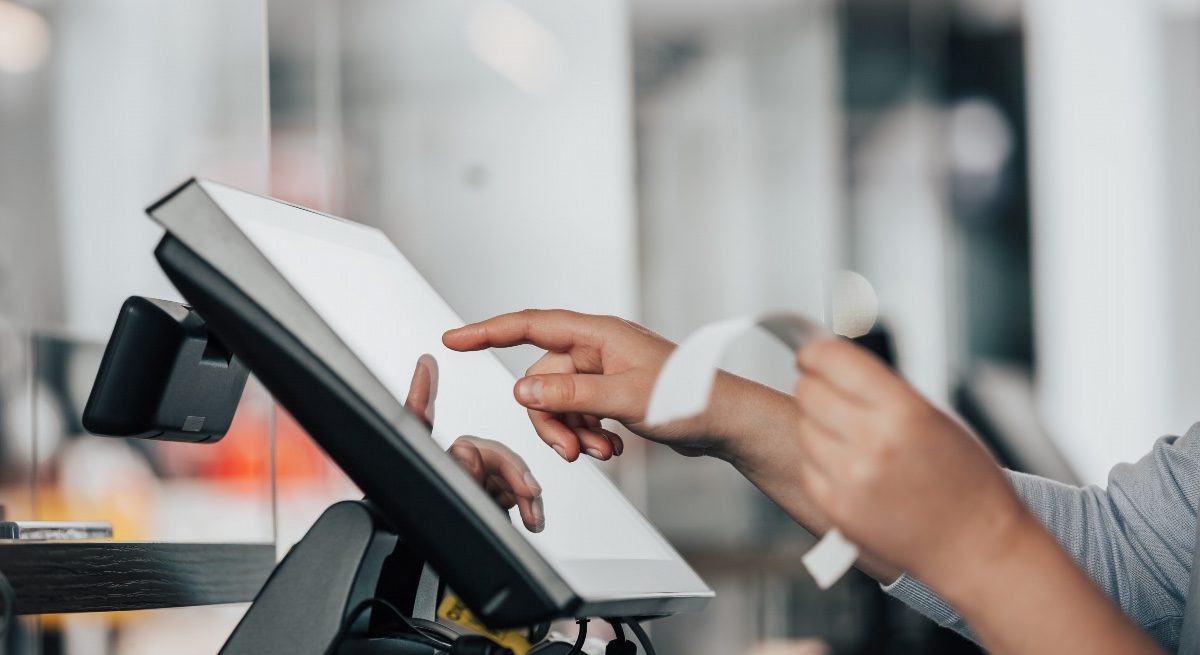How Transaction Monitoring Can Help Prevent Food and Beverage Fraud
5 Min Read By Gergo Varga
As cash intensive businesses (CIB), food and beverage businesses have historically been sites of fraud. Yet, as such businesses move their sales, ordering, operations, and bookings online, the rates of fraud have only increased.
Looking at online food delivery overall, the sector is projected to reach revenues of $343.80 billion in 2022, per figures published on Eatance. That is good news for the sector. But the fraud this attracts isn’t. More and more, fraudsters are hiding behind the anonymity and impersonality of card-no-present (CNP) payments. But there are ways to combat that, and they include transaction monitoring.
A process first required for financial services, it has expanded outside that sector to help those running food and beverage businesses of any scale.
What Is Transaction Monitoring?
Put simply, transaction monitoring is exactly what it sounds like: the process of a company keeping a keen eye on its sales. Not with the intention of tracking whether profits are up or down – whether it’s been a good month or a bad one. But with the intention of seeing if any sales are suspicious.
If you use any fintech apps then all your transactions are being monitored by those companies. Likewise, if you bet on Sunday Football, then all your NFL wins and losses are being monitored by the sports betting sites too. For instance, as noted on a Venmo help page the company not only monitors all transactions closely, but also keeps easy-to-access records of this. Large delivery companies all employ transaction monitoring to help reduce fraud as well.
Crucially, such companies are watching the transactions in real-time: From the moment a person logs in, their activity is being monitored. Their transactions, if irregular, will be analyzed and their accounts suspended. This allows merchants to stop any fraudulent behavior before it goes too far.
When It’s Necessary and Where It Started
If a company deals with large sums of money on a regular basis, or it provides financial services, then it is under a legal obligation to follow anti-money laundering regulations (AML). As explained by Eloomi, transaction monitoring is one of the essential parts of the anti-money laundering (AML) process, and it first started in the banking sector. In fact, according to the same source, estimates of money lost to laundering (also called layering) go up to $2 trillion a year, or five percent of global GDP.
These regulations try to curb the high levels of money laundering that can occur in any sector. This is because money laundering is almost always a consequence of serious, corporate, or violent crime; it is a means for criminal networks to ‘clean’ their cash. By shutting down the ways criminals can clean their cash, lawmakers hope that these forms of crime will be reduced overall too.
Think of it like this: If the playground bully steals money from the other kids but there’s nowhere for them to spend it, then they’ll hopefully stop stealing the money. After all, there’s nothing they can do with it, so why would they take it?
When It’s Prudent and Where It Can Go
However, while a company might not be in the financial sector, it is still sensible to use transaction monitoring when they are at high risk of fraudulent attacks, as SEON notes. Small-scale food and beverage companies aren’t legally obligated to carry out anti-money laundering checks and aren’t therefore required to monitor their customer transactions. But just because it’s not mandated, it doesn’t mean it isn’t a good idea.
When it comes to fraud, posterity not necessity should be the guiding principle. Food and beverage companies can benefit from some of the same tools that were formerly the preserve of the banking sector.
There are several reasons why this is the case, so let’s look at a few.
Anonymous Crypto
First, more cryptocurrencies are being introduced to the market, and this means there’s more room for risk.
A central pillar of the cryptocurrency movement is the anonymity of the payers. As more and more restaurant chains accept Bitcoin as a payment method, along with giving customers crypto-based rewards, more points of anonymous funding enter the picture.
An increased number of anonymous funding points can quickly lead to an increased frequency of fraud but this is not an issue for restaurants, as there are no chargebacks in crypto.
Large Food Organizations
Second, the scale of some food and beverage-adjacent organizations means they are legally obligated, even though they’re not providing a financial service.
If a company is big enough, if it handles a large enough sum of money regularly, then it will be required to roll out some form of transaction monitoring. Think of it like this: if an organization is large enough to sell vouchers or have a loyalty scheme – think Starbucks or Arby’s cards – then it probably needs transaction monitoring too.
Combatting Chargebacks
Third, and by far the most important point: Chargebacks have increased massively over the last several years, and transaction monitoring can help reduce the costs associated with them.
Chargebacks occur when customers dispute the sale of a food item. The customer can either request it from the food merchant or their bank. Either way, it leads to massive losses on the part of the merchants, with actual losses coming in at 240 percent of every dollar claimed on chargebacks per Prommt. In other words, for a $30 disputed take-out order, it’d end up costing the merchant $72 in real terms.
While customers are returning to dining in, online fraud is still high, and this is where almost all chargeback fraud occurs. Criminals will use stolen debit and credit cards in a triangulation-style scheme, offering up for sale cheap meals on Telegram. As a result, the criminals will pocket the customer’s money but pay with stolen funds. Once the legitimate cardholder realizes this, they ask for a chargeback – which means the restaurants lose both the food and the money charged for it.
From Finance and Banking to Food and Beverage – How to Do It
Real-time transaction monitoring software is a key way for any organization, including small-to-medium-sized restaurant businesses, to combat fraud. Yes, in-store sales can be monitored more easily when staff can see the whites of people’s eyes, but that’s not the case for online orders and deliveries.
In the financial sector, transaction monitoring software will track the transactions, suspend accounts, and automatically file suspicious activity reports (SAR) with the Financial Crimes Enforcement Network, this has been a requirement since the 1970 bank secrecy act. For food and beverage providers, such software will work slightly differently.
Firstly, it works in conjunction with customer data collection tools, enabling restaurants to gather data on each customer, which can assess their legitimacy. This type of profiling and customer monitoring allows businesses of any size to determine the legitimacy of any transaction, and act based on that.
For example, a customer may place a buy online pick-up in-store (BOPUS) order for a $50 meal for two people. But that customer may routinely dispute sales, passing on a significant and inflated chargeback cost to the merchant. Transaction monitoring and customer monitoring software will help suspend their account, cutting down on friendly fraud – i.e., illegitimate dispute cases that deliberately aim at getting the card owner free products.
Second, transaction monitoring software can track the use of payment cards across customer accounts. If these change, businesses can pause a transaction until the customer’s identity is verified. On a similar note, transaction monitoring can also flag whether a customer is paying with a card issued in a foreign and/or unlikely country, which might invite additional scrutiny.
For instance, a customer might try using a card stolen from another customer. Transaction monitoring software can flag such a discrepancy (because it was previously associated with a different account or address), asking for additional verification or proof, such as MFA.
Ultimately, for smaller-to-medium-sized food and beverage businesses, using transaction monitoring isn’t legally necessary, but it is undoubtedly prudent, especially if using their own website or app rather than a food delivery platform.
Online payments have increased the rate of chargeback fraud hugely, and transaction monitoring is the best way to combat this.


